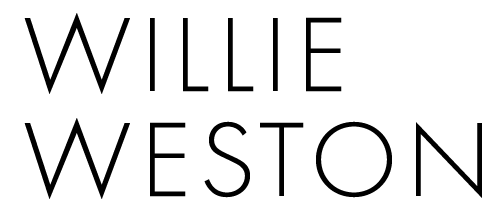Buying Indigenous art: in brief
The latest paintings, being photographed and documented, Warakurna Artists. Image courtesy Tim Acker.
This piece first appeared on The Design Files on 23 March 2017. Updated March 2024.
The Indigenous* art market can seem complex and daunting to the novice buyer. So many galleries selling so much art – where to begin? How to tell a reputable seller from an unethical one? And how to know whether your purchase supports the artist who created it?
While not exhaustive, this guide suggests some places to buy Indigenous art, and things to keep in mind when buying.
These tips mostly relate to art from remote areas – which has historically been favoured by unethical opportunists – rather than to art by ‘urban’ artists, who often work independently through commercial galleries. They also relate to art sold in the primary market, where artists receive payment for the sale of their work.
First, some background:
Indigenous art centres are government-funded, Indigenous-owned organisations. They are usually located in remote communities and provide art production facilities, training and promotion to member artists.
Commercial galleries mount curated selling exhibitions, sometimes in partnership with remote art centres. In fact, art centres often reserve their best work for these shows, which offer artists access to metropolitan markets.
Installation view of Middle Distance, curated by Kade McDonald and Marie Falcinella, praxis ARTSPACE, Adelaide, 2015. Image courtesy Hanging Valley, Melbourne.
It’s important to know an artwork’s provenance, or source. Art produced through art centres, whether purchased from the art centre directly or from a commercial gallery, is generally sold with a ‘certificate of authenticity’ – one way of demonstrating provenance. These certificates contain the artwork’s details (e.g. artist, title, date and catalogue number). However, not all sellers offer certificates and buyers should be aware that this documentation can vary considerably in terms of authenticity.
If an artwork has dubious provenance, resale can become difficult. Poor or unknown provenance also means it’s hard to establish whether the artist has been paid fairly. Art sales provide one of few income sources in many remote communities, supporting the livelihoods of some of Australia’s most disadvantaged groups.
TARNANTHI Art Fair, Adelaide, 2015. Image courtesy John Montesi and TARNANTHI.
Organisations like the Indigenous Art Code (IAC) and the Australian Commercial Galleries Association (ACGA) exist, in part, to help buyers differentiate between ethical and unethical sellers. If a gallery is a signatory you should see the IAC or ACGA logo in their space or online. However, membership is voluntary and there are ethical galleries who are not signatories, so the best approach is to do your homework!
Research the artist: Who is the artist and where are they from? Get acquainted with their style, find out whether they are represented by a gallery and get an idea of what their work sells for. Getting familiar with an artist’s practice will help you navigate the market when you’re ready to buy.
Ask questions: “You should expect to be informed about the artist’s background and exhibition history, and whether they work independently or through an art centre”, says Vivien Anderson, of Vivien Anderson Gallery. Has the artist been paid fairly? Can the seller supply a certificate of authenticity? As Gabrielle Sullivan, CEO of the Indigenous Art Code, says: “Anyone doing the right thing by the artist should be able to give you this information”.
Of course, not everyone agrees about the best places to buy, and some fantastic remote area artists choose to work outside the art centre system. However, with a bit of research and by asking the right questions, you can ensure you buy beautiful art that also supports the artist who created it.
Alison Murray Murray Family Together 2016 Bagu – earthen ware with glaze (each Bagu varies from 63 x 40 x 10 cm to 30 x 11 x 7 cm) Image courtesy Vivien Anderson Gallery, St Kilda.
A few great places to start looking at and learning about Indigenous art:
Go to an art fair: Cairns Indigenous Art Fair, Darwin Aboriginal Art Fair, Desert Mob, Revealed or Tarnanthi.
Visit a gallery: Aboriginal and Pacific Art, Alcaston Gallery, Outstation Gallery, Paul Johnstone Gallery, Short Street Gallery, Utopia Art Sydney and Vivien Anderson Gallery, to name just a few!
Or, if you can – buy directly from an art centre! Many welcome visitors and some are in spectacular country! Learn more about art centres through these peak bodies: AACHWA, Ananguku Arts, ANKA, Desart, IACA and Umi Arts
Mick Wikilyiri Tjala Tjukurpa – Honey Ant Story 140 x 153cm From the Walytjapitiku Laina – Family Lines exhibition at Alcaston Gallery, Fitzroy. Image courtesy Caitlin Mills for The Design Files.
* The authors acknowledge and recognise the diversity and distinctness of all Aboriginal and Torres Strait Islander peoples. For brevity, however, the term ‘Indigenous’ will be used throughout this blog when referring broadly to Aboriginal and Torres Strait Islander art and artists.





